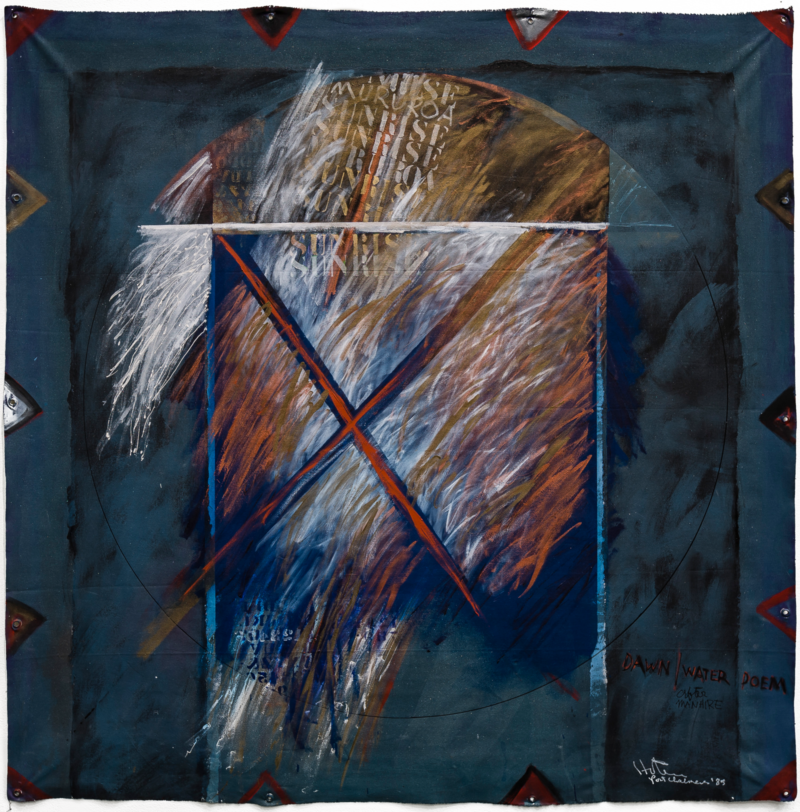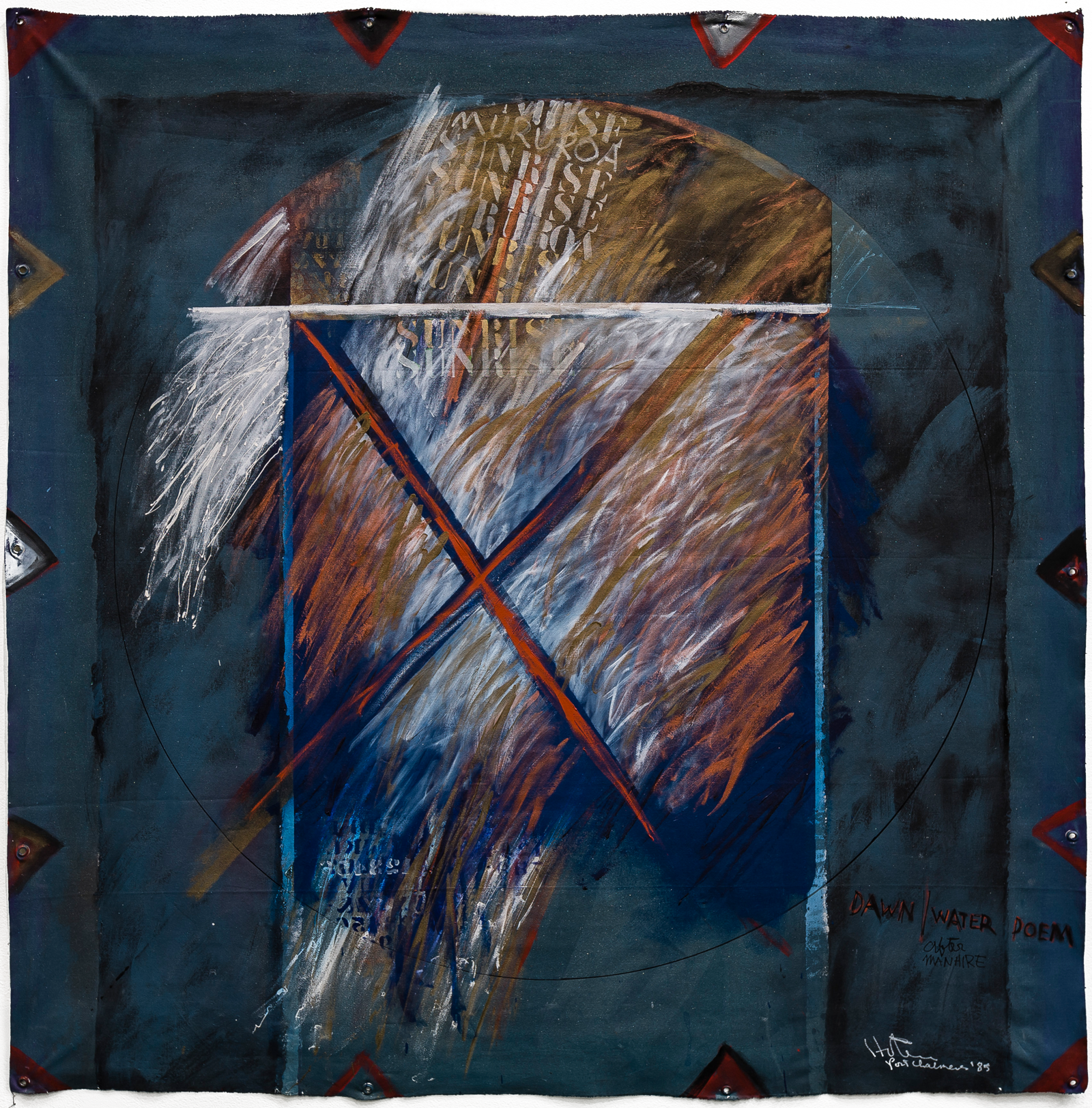HOTERE, Ralph;
Dawn/Water Poem II
1985
Acrylic on unstretched canvas
1810 x 1810mm

The following two texts were written for Te Huringa/Turning Points and reflect the curatorial approach taken for that exhibition.
Peter Shaw
The impetus for this explosive work was the event that took place in the Waitematā Harbour, Tāmaki Makaurau, at 11:49pm on 19 July 1985. In the first act of terrorism in Aotearoa sponsored by a foreign state (since colonisation), French secret service agents sank the Greenpeace vessel Rainbow Warrior, as it lay in dock while final preparations were made for its voyage to Mururoa Atoll to protest against continuing French nuclear bomb tests.
In this work, Ralph Hotere, never one for an ivory-towered approach to artistic practice, demonstrates the powerful sense of political engagement that has been characteristic of his life’s work.
Jo Diamond
In this work, an aquatic allusion is made palpable by the clever incorporation of triangular shapes that surround the eyelets of this unstretched canvas and the squared shapes that progress unevenly towards its centre. It provides the sense of an inverted ripple or complex whirlpool. A watery slate-blue dominates the painting, yet the incorporation of other colours—rusty red and chalk white—adds a disturbing quality. If the brooding blue represents a deep ocean, the other colours and the way they have been applied (scumbled, but mostly scratched in appearance) denote the pollution of rusting, submerged metal.
The anti-nuclear politics of the work are easily discerned from its inclusion of text, particularly the word ‘Mururoa’ and the added word ‘Sunrise’ telling us that there is little glory in this dawn; the first sunlight of a day broken by human violation: nuclear bomb tests. The writing, squared-off through incomplete divisions and an indecisive, yet central, cross-shape, help to provide a sense of ‘unnaturalness’ and foreboding, belying the painting’s comparatively innocuous title.
As ever, the question as to whether Hotere’s Māori identity is relevant to this work is raised. His renowned hesitation to comment verbally on his art and life leaves the viewer free to speculate on an answer. Dawn/Water Poem II draws us beyond that label ‘Māori’. Its testimony against violation of the environment touches a chord in most people concerned with ecology and environmental sustainability, regardless of their location and attached societies. The environment at the centre of Hotere’s concern in this painting is the Pacific Ocean, one that many Māori consider an intimate part of their cultural inheritance.
That Hotere is a Māori artist is possibly less significant than his contribution to a universal campaign against local, regional and global destruction. The impact of this artist’s environmental politics, expressed as a poetic art, continues to this day, as, sadly, do the follies of human action to which he draws our attention.
Inscriptions
DAWN/WATER POEM / After / MANHIRE / Hotere / Port Chalmers '85 [l.r.] Janne / Land Gallery / "Dawn/water poem" II ; Cat. No. 7 / Acrylic / 72" x 72" [verso]Exhibition History
Te Huringa/Turning Points: Pākehā Colonisation and Māori Empowerment, Sarjeant Gallery Te Whare o Rehua, Whanganui, 8 April to 16 July 2006 (toured)
Solo exhibition, Janne Land Gallery, Te Whanganui-a-Tara, 1985, cat. no. 7
Provenance
1985–
Challenge Collection (later Fletcher Trust Collection), purchased from Janne Land Gallery, Te Whanganui-a-Tara, August 1985

